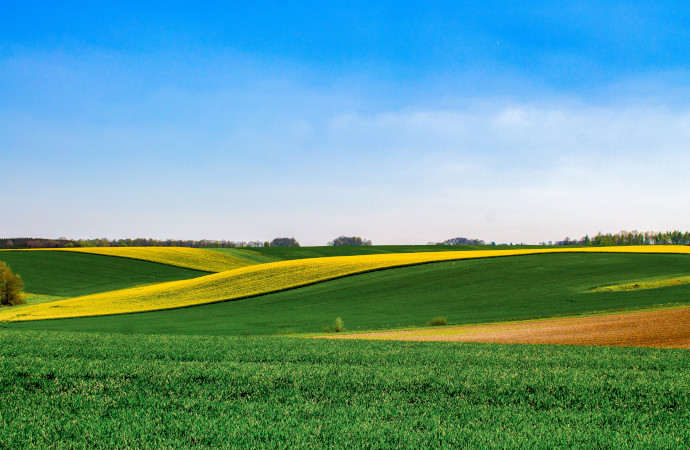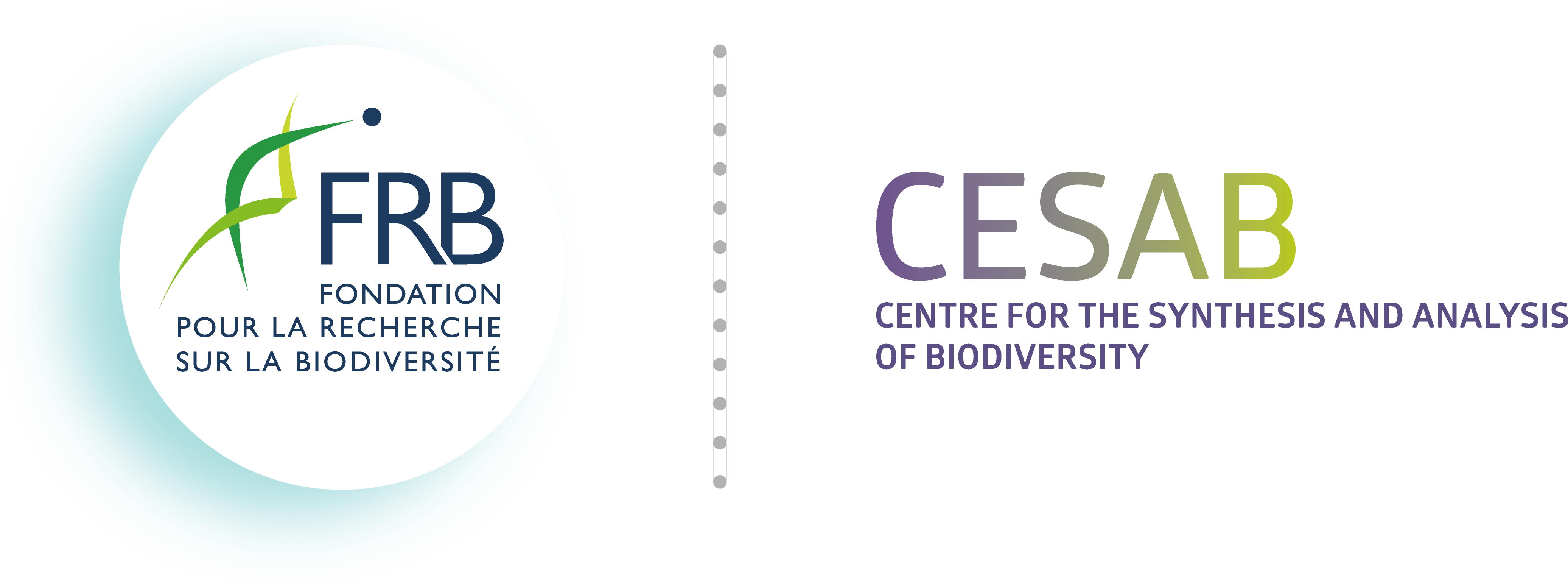NETSEED
Strengthening management of agrobiodiversity through social networks: A cross-disciplinary method for analyzing how local seed systems impact the diversity of domesticated plants

Crop biodiversity contributes to the performance of agroecosystems. Seed circulation (SC) by farmers is key to maintaining agrobiodiversity. Understanding how SC impacts food security requires studies integrating biological and social aspects.
Seeds of cultivated plants are both biological objects (carriers of genetic information) and social and economic objects (markers of identity and status). Seed circulation (SC) shapes the diffusion of agrobiodiversity, affecting the performance of agroecosystems. But SC is not driven by agronomic concerns alone; SC reflects social structure. No adequate framework existed for the analysis of such a ‘hybrid’ object.
NETSEED’s objective was to develop a conceptual framework and methodology for integrating biological and social aspects of SC to understand how it contributes to ensuring food security. To respond to this challenge, NETSEED assembled an interdisciplinary team: 17 researchers from fields as diverse as geography, anthropology, population genetics and modelling. the project’s first task, to develop a common language across disciplines, would require producing a thesaurus, a glossary, and an “application ontology” integrating concepts from different disciplines and permitting analysis of disparate types of data.
NETSEED then aimed to use the new framework to produce state-of-the-art reviews, advancing synthesis of the fragmented literature and pointing to gaps; to analyze our own data for general patterns; to identify limitations of current methods; and finally, to develop new methods for producing and analyzing the data needed for rigorous, truly integrative studies of SC networks.

PI:
Doyle MCKEY – University of Montpellier/CNRS (France)
Postdocs:
Marco PAUTASSO – CNRS Montpellier (France); Mathieu THOMAS – INRA (France).
NETSEED brings together specialists in agriculture, ethnobiology, biodiversity, anthropology, population genetics and agronomy.
NETSEED was selected from the 2010 call for proposals. The project selection process was carried out by a committee of independent experts.
[25] Aistara GA (2018) Organic Sovereignties: Struggles over Farming in an Age of Free Trade. University of Washington Press, Seattle, USA. URL: https://uwapress.uw.edu/book/9780295743110/organic-sovereignties/.
[24] Garine E, Luxereau A, Wencélius J, Violon C, Robert T, Barnaud A, Caillon S & Raimond C (2017) De qui les variétés traditionnelles de plantes cultivées pourraient-elles être le patrimoine ? Réflexions depuis le bassin du lac Tchad. In: Juhé-Beaulaton D, Cormier-Salem M, de Robert P & Roussel B (Eds.), Effervescence patrimoniale au Sud : Entre nature et société, IRD Éditions, Marseille, France (pp. 379–409). DOI: 10.4000/books.irdeditions.8863.
[23] Thomas M & Caillon S (2016) Effects of farmer social status and plant biocultural value on seed circulation networks in Vanuatu. Ecology and Society, 21, 13. DOI: 10.5751/ES-08378-210213.
[22] Violon C, Thomas M & Garine E (2016) Good year, bad year: Changing strategies, changing networks? A two-year study on seed acquisition in northern Cameroon. Ecology and Society, 21, 34. DOI: 10.5751/ES-08376-210234.
[21] Wencélius J, Thomas M, Barbillon P & Garine E (2016) Interhousehold variability and its effects on seed circulation networks: A case study from northern Cameroon. Ecology and Society, 21, 44. DOI: 10.5751/ES-08208-210144.
[20] Barbillon P, Thomas M, Goldringer I, Hospital F & Robin S (2015) Network impact on persistence in a finite population dynamic diffusion model: Application to an emergent seed exchange network. Journal of Theoretical Biology, 365, 365–376. DOI: 10.1016/j.jtbi.2014.10.032.
[19] Coomes OT, McGuire SJ, Garine E, Caillon S, McKey D, Demeulenaere E, Jarvis D, Aistara GA, Barnaud A, Clouvel P, Emperaire L, Louafi S, Martin P, Massol F, Pautasso M, Violon C & Wencélius J (2015) Farmer seed networks make a limited contribution to agriculture? Four common misconceptions. Food Policy, 56, 41–50. DOI: 10.1016/j.foodpol.2015.07.008.
[18] Labeyrie V, Thomas M, Muthamia ZK & Leclerc C (2015) Seed exchange networks, ethnicity, and sorghum diversity. Proceedings of the National Academy of Sciences of the United States of America, 113, 98–103. DOI: 10.1073/pnas.1513238112.
[17] Thomas M, Verzelen N, Barbillon P, Coomes OT, Caillon S, McKey D, Elias M, Garine E, Raimond C, Dounias E, Jarvis D, Wencélius J, Leclerc C, Labeyrie V, Cuong PH, Hue NTN, Sthapit B, Rana RB, Barnaud A, Violon C, Reyes LMA, Moreno LL, de Santis P & Massol F (2015) Chapter 6 - A network-based method to detect patterns of local crop biodiversity. In: Woodward G & Bohan DA (Eds.), Ecosystem services: From biodiversity to society, Part 1, Advances in Ecological Research (Vol. 53), Academic Press (pp. 259–320). DOI: http://doi.org/10.1016/bs.aecr.2015.10.002.
[16] Aistara GA (2014) Actually existing tomatoes: Politics of memory, variety, and empire in Latvian struggles over seeds. Focaal, 2014, 12–27. DOI: 10.3167/fcl.2014.690102.
[15] Demeulenaere E (2014) A political ontology of seeds: The transformative frictions of a farmers' movement in Europe. Focaal, 2014, 45–61. DOI: 10.3167/fcl.2014.690104.
[14] Demeulenaere E (2014) Les semences entre critique et expérience : Les ressorts pratiques d'une contestation paysanne. Revue d'Études en Agriculture et Environnement, 94, 421–442. DOI: 10.4074/s1966960713014033.
[13] Pautasso M (2014) Network simulations to study seed exchange for agrobiodiversity conservation. Agronomy for Sustainable Development, 35, 145–150. DOI: 10.1007/s13593-014-0222-9.
[12] Pautasso M & Jeger MJ (2014) Network epidemiology and plant trade networks. AoB PLANTS, 6, plu007. DOI: 10.1093/aobpla/plu007.
[11] Wencélius J & Garine E (2014) Dans les sillons de l'alliance : Ethnographie de la circulation des semences de sorgho dans l'Extrême-Nord du Cameroun. Les Cahiers d'Outre-Mer, 67, 93–116. DOI: 10.4000/com.7082.
[10] Pautasso M (2013) Forest ecosystems and global change: The case study of Insubria. Annali di Botanica, 3, 1–29. DOI: 10.4462/annbotrm-10092.
[09] Pautasso M (2013) Ten Simple Rules for Writing a Literature Review. PLoS Computational Biology, 9, e1003149. DOI: 10.1371/journal.pcbi.1003149.
[08] Pautasso M, Aas G, Queloz V & Holdenrieder O (2013) Dieback of European ash: Let's avoid this kind of opportunities for nature conservation. Biological Conservation, 167, 452–453. DOI: 10.1016/j.biocon.2013.07.020.
[07] Pautasso M, Aas G, Queloz V & Holdenrieder O (2013) European ash (Fraxinus excelsior) dieback: A conservation biology challenge. Biological Conservation, 158, 37–49. DOI: 10.1016/j.biocon.2012.08.026.
[06] Pautasso M, Aistara GA, Barnaud A, Caillon S, Clouvel P, Coomes OT, Delêtre M, Demeulenaere E, de Santis P, Döring TF, Eloy L, Emperaire L, Garine E, Goldringer I, Jarvis D, Joly HI, Leclerc C, Louafi S, Martin P, Massol F, McGuire SJ, McKey D, Padoch C, Soler C, Thomas M & Tramontini S (2013) Seed exchange networks for agrobiodiversity conservation. A review. Agronomy for Sustainable Development, 33, 151–175. DOI: 10.1007/s13593-012-0089-6.
[05] Soler C, Saidou AA, Vi Cao Hamadou T, Pautasso M, Wencélius J & Joly HHI (2013) Correspondence between genetic structure and farmers' taxonomy: A case study from dry-season sorghum landraces in northern Cameroon. Plant Genetic Resources: Characterization and Utilization, 11, 36–49. DOI: 10.1017/S1479262112000342.
[04] Döring TF, Bocci R, Hitchings R, Howlett S, Lammerts van Bueren ET, Pautasso M, Raaijmakers M, Rey F, Stubsgaard A, Weinhappel M, Wilbois KP, Winkler LR & Wolfe MS (2012) The organic seed regulations framework in Europe-current status and recommendations for future development. Organic Agriculture, 2, 173–183. DOI: 10.1007/s13165-012-0034-7.
[03] Pautasso M (2012) Challenges in the conservation and sustainable use of genetic resources. Biology Letters, 8, 321–323. DOI: 10.1098/rsbl.2011.0984.
[02] Pautasso M (2012) Publication growth in biological sub-fields: Patterns, predictability and sustainability. Sustainability, 4, 3234–3247. DOI: 10.3390/su4123234.
[01] Demeulenaere E & Bonneuil C (2011) Des semences en partage : Construction sociale et identitaire d'un collectif paysan autour de pratiques semencières alternatives. Techniques & Culture, 57, 202–221. DOI: 10.4000/tc.5902.